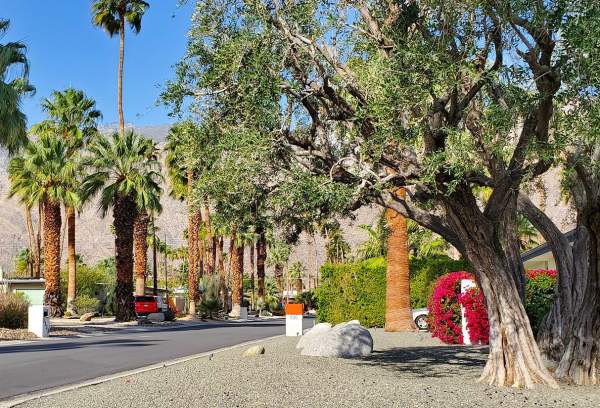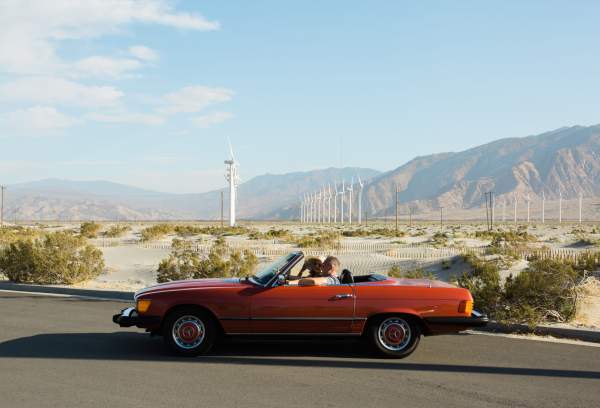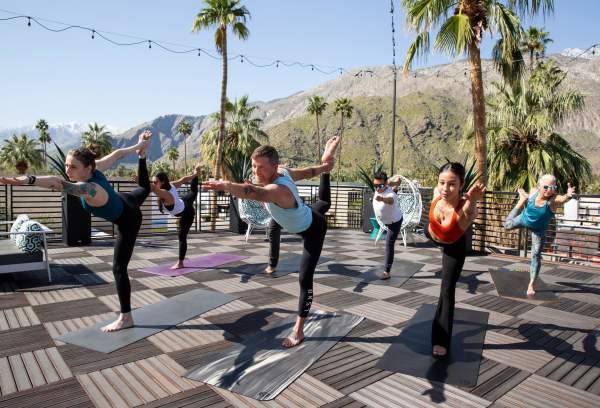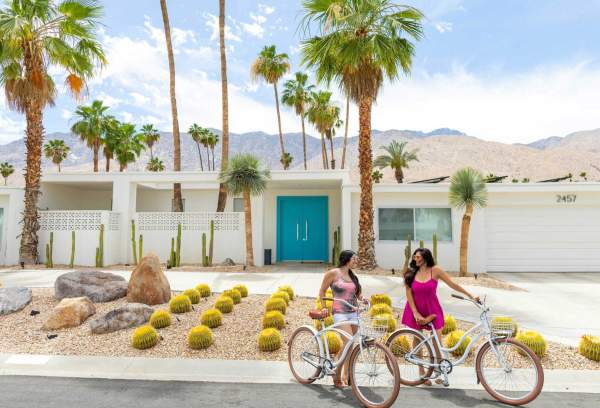Deepwell Ranch Neighborhood History
George Fitch, Editor of the San Francisco Chronicle, purchased the land in 1895 and planted an orchard of apricot trees. A 10-year drought followed, and in 1911, Oliver McKinney and his wife Rose arrived in Palm Springs looking for a home site and took the lease on the Fitch property.
The McKinneys planted castor bean trees to supply the U.S. armed forces with castor oil. However, the men who controlled the water supply (Whitewater ditch) were interested in developing the northern part of town and closed the water supply. The McKinneys were forced to abandon their hopes and the property.
Henry Parsons, an eminent scientist and writer, came to the property in 1926, and the first thing he did was drill a well. Although he found water at 100 feet, he drilled further until he hit 613 feet, and he stopped because 13 was his lucky number. Having the deepest water well in the Coachella Valley, he called the place Deep Well, and the name stuck.
Parsons sold it in 1928 to Charles Doyle, who converted it to Deep Well Guest Ranch. It changed hands a few times but remained a ranch. In 1951, local developer William Grant purchased it and subdivided it into a custom home development. The long, low, one-story houses were and still are a mixture of Spanish Colonial Revival, Ranch, and midcentury modern.
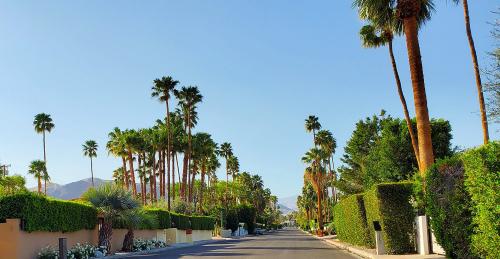
Begin Palm Springs Bike Tour
A good place to begin your Palm Springs Bike Tour is the corner of Indian Trail and East Palm Canyon Drive. Indian Trail will angle right onto Camino Real. At the split, you will see Villa Royale. Villa Royal is a fantastic Spanish-style boutique hotel. It was used for the TV series Mad Men (season 2).
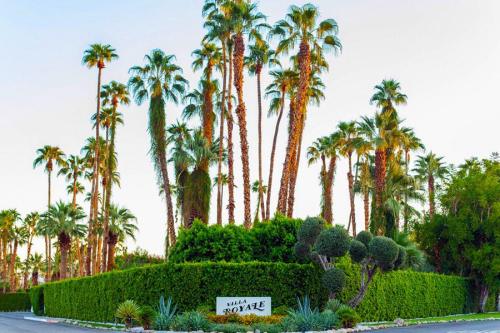
Follow Camino Real to Calle Palo Fierro, turning right. Continue to Mesquite Avenue and turn right.
Ginny Simms (1909 - 1994) – 1139 Mesquite Ave. – was a popular big band singer and actress best known as the featured vocalist with Kay Kyser’s Orchestra in the 1930s and 1940s, where her warm, clear voice made her a radio favorite. She later starred in Hollywood films like That’s Right—You’re Wrong and You’ll Find Out, hosted her own radio program, and enjoyed a successful solo career. After stepping back from show business, she devoted herself to charitable work, especially supporting veterans and hospitals. A longtime Palm Springs resident, she remained active in the Hollywood social scene until her death there at age 84.
Seen here at the 1957 Palm Springs Police Show.
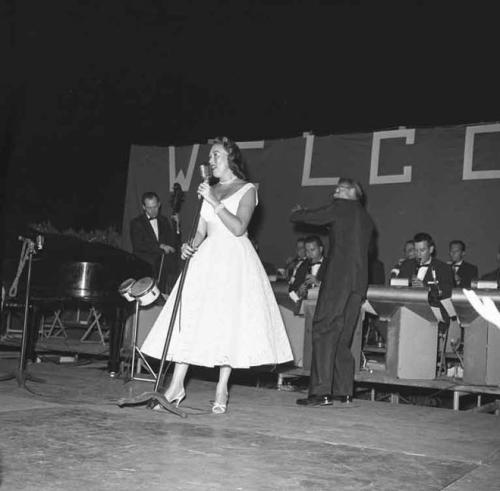
Credit: Palm Springs Historical Society
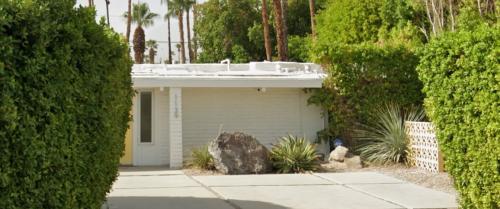
Loretta Young (1913 - 2000) – 1075 S Manzanita Av. (corner of Mesquite).
Actress and Oscar winner for The Farmer's Daughter (1947) and Emmy for The Loretta Young Show (1953). In Palm Springs, Young was part of the early Hollywood colony that helped establish the desert as a retreat for stars. She and her family often stayed in the desert during the 1930s and 1940s, when studios required actors to remain within 100 miles of Los Angeles, making Palm Springs an ideal getaway. Known for her devout Catholic faith and elegant style, she was a familiar face at local churches, charity events, and social gatherings, and she moved in the same circles as fellow stars like Clark Gable, Cary Grant, and Bob Hope.
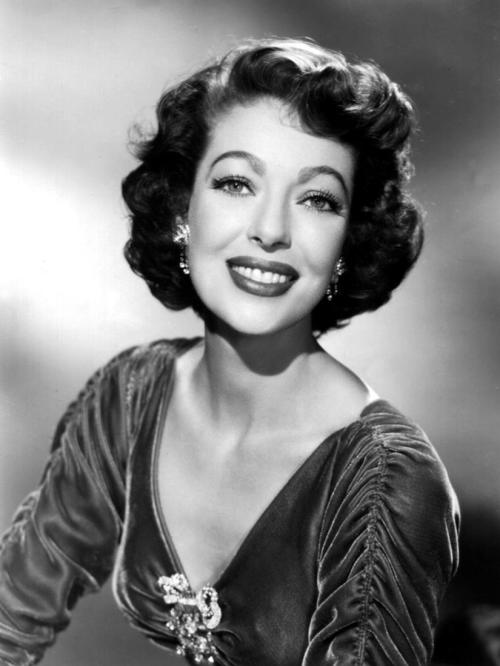
Studio Image, 1943
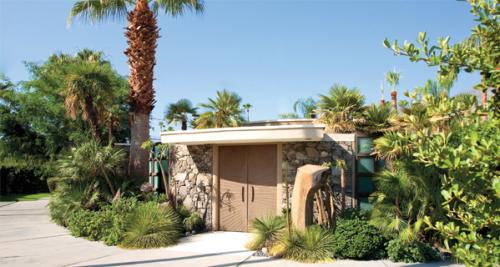
Turn right on Calle Rolph.
Carmen Maranda – 1044 Calle Rolph, was a Brazilian-born singer, dancer, and actress who became one of Hollywood’s most colorful stars of the 1940s. Known as “The Brazilian Bombshell,” she dazzled audiences with her samba rhythms, dazzling costumes, and signature fruit-laden hats. After rising to fame in Brazil with hit recordings and film appearances, she was brought to the U.S. by Broadway impresario Lee Shubert in 1939 and soon signed with 20th Century-Fox. Miranda starred in musicals such as Down Argentine Way (1940) and The Gang’s All Here (1943), becoming the highest-paid female performer in the United States during World War II and a symbol of Latin American culture worldwide.
The vibrant, fruit-hat–wearing icon of Hollywood’s Golden Age maintained a home in Palm Springs, where she spent part of her time alongside her Beverly Hills and Rio de Janeiro residences.
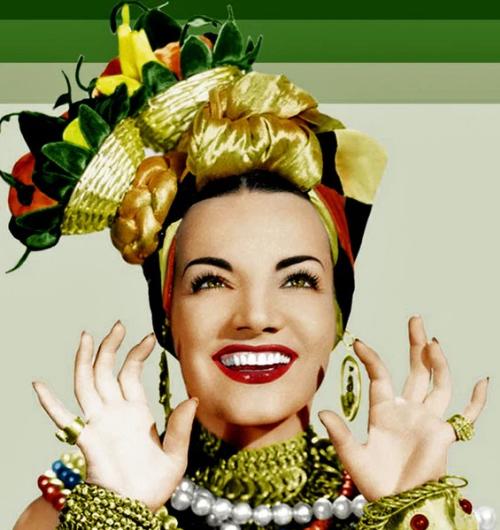
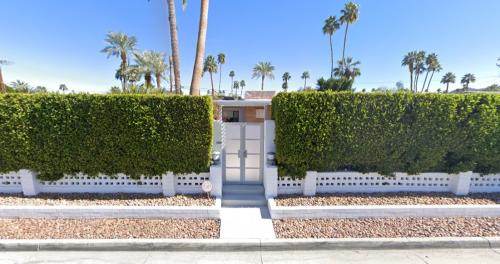
Marjorie Main (1890 - 1975) – 1280 Calle Rolph – was an American character actress beloved for her no-nonsense, homespun roles, especially as “Ma Kettle” in Universal’s long-running Ma and Pa Kettle comedies.
Born Mary Tomlinson in Indiana, she began her career in vaudeville and on Broadway before transitioning to Hollywood films in the 1930s. With her raspy voice, plainspoken style, and strong screen presence, she often played tough housekeepers, landladies, or frontier women. She earned an Academy Award nomination for The Egg and I (1947), which introduced the Ma and Pa Kettle characters, later spun off into a popular film series. Main also appeared in classics like Meet Me in St. Louis (1944), The Harvey Girls (1946), and Dead End (1937).
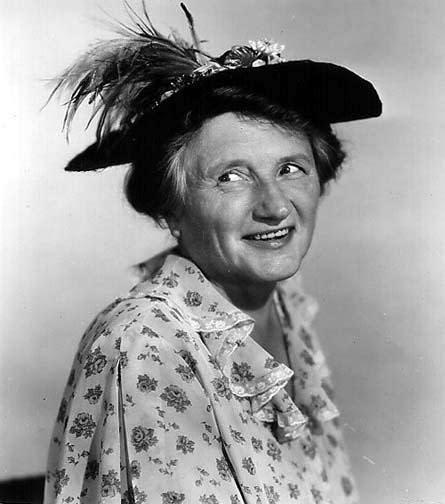
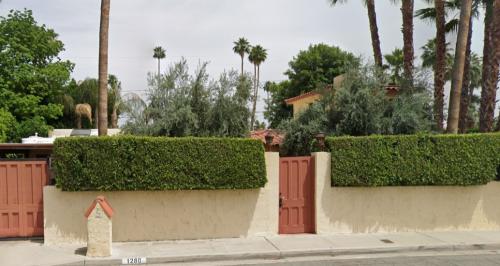
Robert Livingston (1904 - 1988) – 1321 S Calle Rolph – was an American film actor best remembered as one of Republic Pictures’ reliable leading men, especially in Westerns and adventure serials of the 1930s and 1940s.
Born Robert Edward Randall, he began his screen career in the silent era and became best known for his work in B-movies. Livingston starred as Stony Brooke in the popular Three Mesquiteers Western series, a role later taken over by John Wayne. He also played masked heroes in serials such as The Lone Ranger (1939) and The Vigilantes Are Coming (1936). Over his career, he appeared in more than 200 films, often cast as the clean-cut cowboy, military officer, or romantic lead in Republic’s stable of productions.
Though he never rose to top-tier Hollywood stardom, Livingston had a long and steady career, making him a familiar face to Depression- and wartime-era audiences who loved Western adventures.
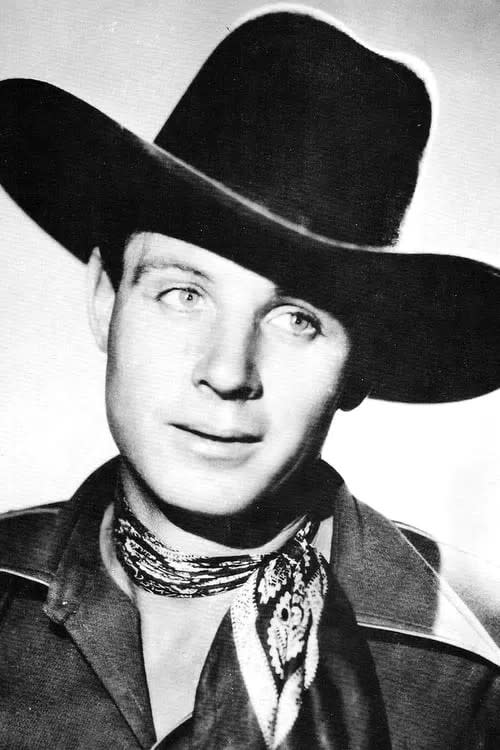
Oscar Mayer – 1353 Calle Rolph – Oscar F. Mayer, the founder of the renowned meatpacking company, was among the early Hollywood elite who established a residence in Palm Springs. This residence is a prime example of the midcentury modern architecture that characterizes much of Palm Springs' historic homes.
For those interested in experiencing a piece of Palm Springs' history, the Oscar Mayer House, built by the Oscar Mayer family, is now available as a vacation rental. Boasting 'Classic '50s' architecture and spectacular views of Mt. San Jacinto, the home offers approximately 2,550 square feet of living space, decorated with a mid-century modern flair while remaining comfortable and inviting.
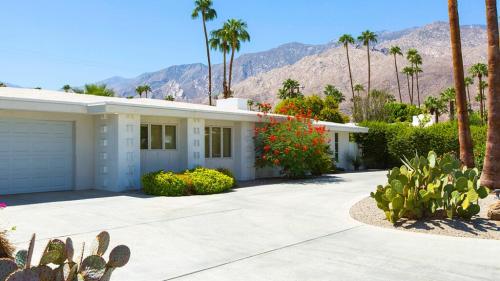
Continue your Palm Springs Bike Tour South to Sonoran Road and turn right. Go one block and turn right again at Sagebrush Road.
Jerry Lewis (1926 - 2017) – 1349 Sagebrush Road - was an iconic American comedian, actor, filmmaker, and humanitarian, widely recognized for his slapstick comedy, partnership with Dean Martin, and long-standing work with the Muscular Dystrophy Association (MDA).
Career Highlights
- Lewis rose to fame in the 1940s and 1950s as part of the comedy duo Martin and Lewis, starring in numerous films and nightclub performances.
- He later had a successful solo career in movies like The Bellboy (1960), Cinderfella (1960), and The Nutty Professor (1963), many of which he wrote, directed, and produced.
- Known for his physical comedy and inventive visual gags, he became a Hollywood legend and a significant influence on later comedians.
Connection to Palm Springs
- Jerry Lewis was a longtime resident and social fixture in Palm Springs, owning a home in the city and participating in its famous Hollywood community.
- His Palm Springs residence was located in the Deepwell Estates and Movie Colony neighborhoods, where he mingled with other stars such as Loretta Young, Carmen Miranda, and William Holden.
- Lewis also used Palm Springs as a retreat during film shoots and for social and charitable events. His presence helped reinforce Palm Springs’ reputation as “Hollywood’s Playground,” a desert haven for actors seeking both privacy and leisure.
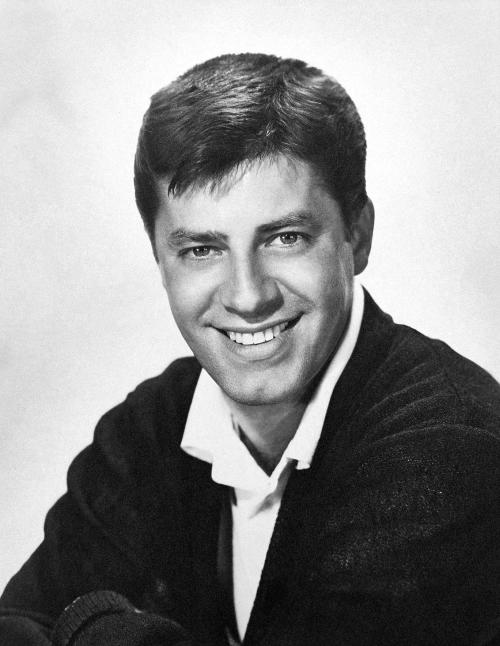
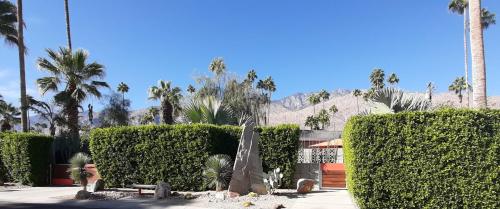
Turn Left at Ocotillo Ave. and again at Driftwood Drive.
William Holden (1918 - 1981) – 1323 Driftwood Drive - was an Academy Award–winning American actor, known for his versatility and leading roles in classics such as Sunset Boulevard (1950), Stalag 17 (1953), for which he won the Oscar for Best Actor, The Bridge on the River Kwai (1957), and Network (1976).
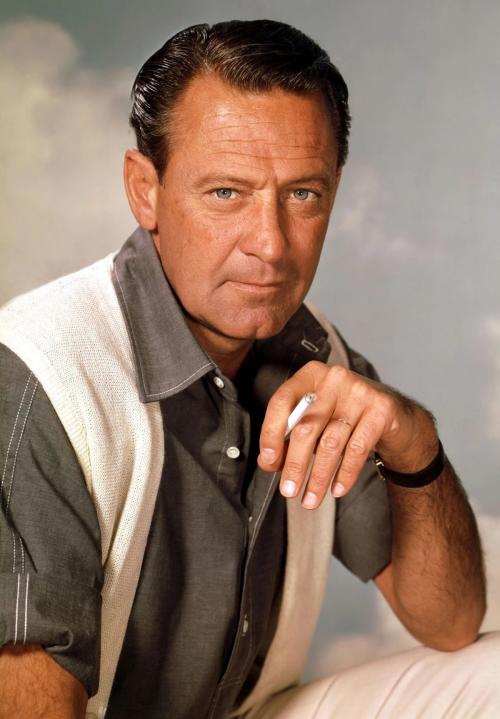
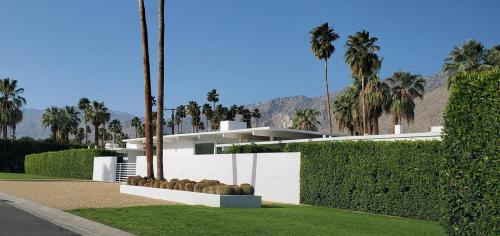
Turn right at Deepwell Road and continue west. It will run into South Deepwell Road, which will bring you back to East Palm Canyon Drive, where you began. There are many more streets to explore in this neighborhood, and architectural examples have helped define Palm Springs' iconic midcentury style. While this tour introduces you to the neighborhood, now that you know your way around, explore!
Other Links:
Bike Palm Springs Rentals & Tours
Palm Springs Big City Loop Bike Tour
Pedal Through Palm Springs: A Self-Guided Tour of Midcentury Charm
Explore Historic Deepwell Ranch Neighborhood: Self-Guided Bike Tour
- 8 min read
Deepwell Ranch Neighborhood History George Fitch, Editor of the San…
Palm Springs Road Trip: Your Easy Outdoor Escape
- 5 min read
Sometimes the best adventures are just down the road. Within two hours…
Big Wheel Tours: Where Passionate Meets Palm Springs Adventure
- 5 min read
Tourists make the best tour guides. Their sense of wonder pushes them…
A Palm Springs Wellness Guide
- 13 min read
Welcome to Palm Springs, a paradise for wellness enthusiasts! Whether…
Palm Springs Big City Loop Bike Tour 🚴♀️
- 12 min read
This great introductory self-guided bike ride will introduce you to…
